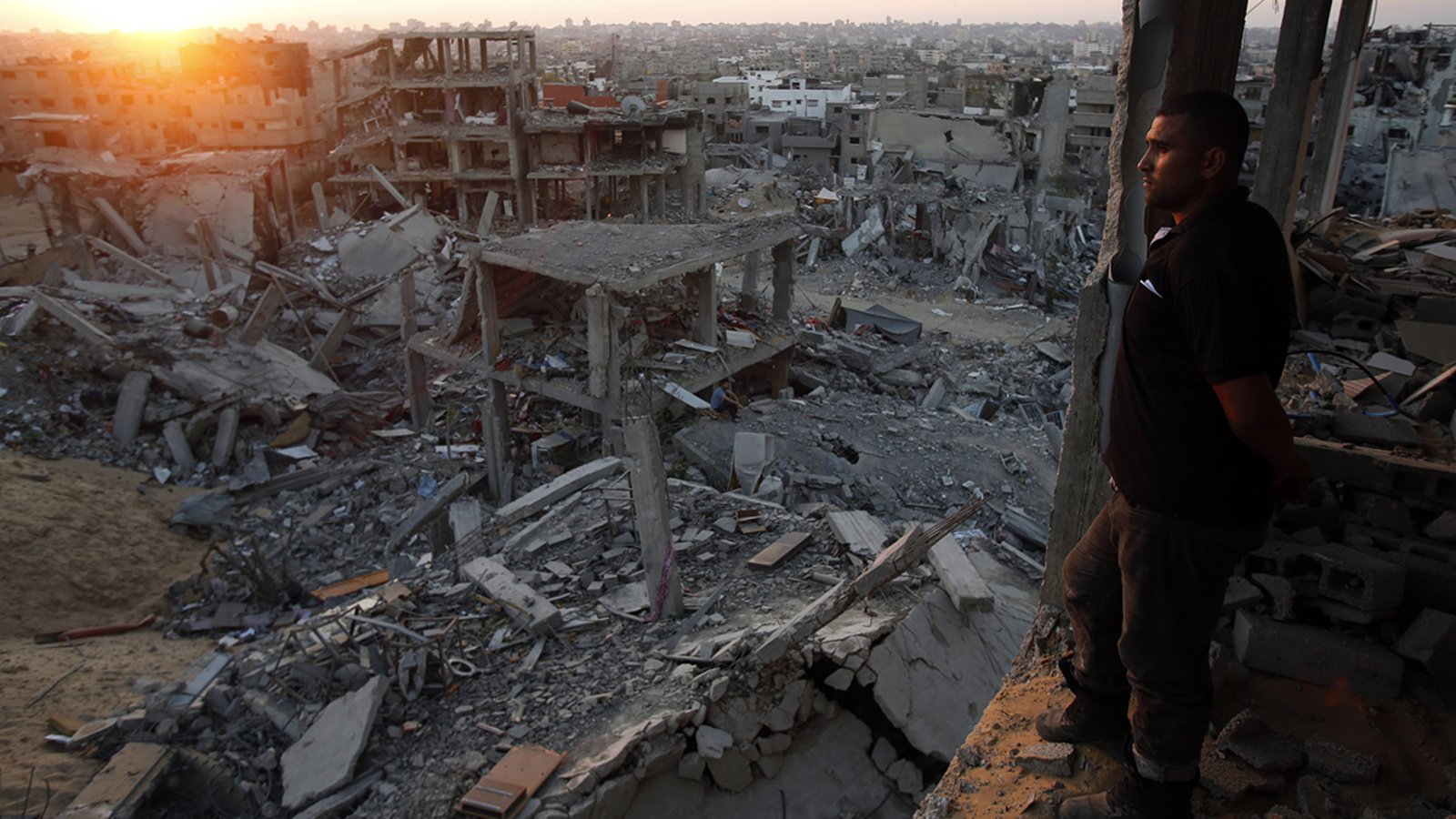Report on Tsunami Early Warning Systems and Their Alignment with Sustainable Development Goals
Introduction: Tsunami Risk and the Global Sustainable Development Agenda
The recent 8.8 magnitude earthquake near Russia’s Kamchatka Peninsula, which prompted widespread tsunami alerts across the Pacific, serves as a critical reminder of the persistent threat posed by rapid-onset natural hazards. While this specific event did not result in major damage, it underscores the importance of effective early warning systems in mitigating disaster risk. The efficacy of such systems is directly linked to the achievement of several United Nations Sustainable Development Goals (SDGs), particularly those focused on building resilient communities and protecting human life.
The core function of a tsunami early warning system—providing timely information to enable evacuation—is fundamental to advancing the 2030 Agenda for Sustainable Development. These systems are a critical tool for disaster risk reduction, a cross-cutting theme essential for achieving goals related to poverty, health, infrastructure, and sustainable communities.
- SDG 11 (Sustainable Cities and Communities): A primary objective is to make human settlements safe, resilient, and sustainable. Tsunami preparedness is a key component of this goal.
- SDG 13 (Climate Action): While tsunamis are geological events, strengthening resilience and adaptive capacity to all natural hazards is a central target of SDG 13.
- SDG 3 (Good Health and Well-being): The ultimate purpose of these systems is to prevent loss of life and injury, directly contributing to global health and well-being targets.
The Role of Tsunami Early Warning Systems in Achieving SDG 3
Tsunamis, though rare, are high-impact events with catastrophic potential. The 2004 Indian Ocean tsunami, which claimed over 230,000 lives, and the 2011 Japan tsunami, which resulted in more than 18,000 fatalities, highlight the devastating consequences for human health and well-being (SDG 3). Effective early warning systems are the most critical intervention for preventing such large-scale loss of life.
Core Components of an Effective Warning System
- Detection and Monitoring: This initial stage relies on resilient infrastructure (SDG 9). Seismic networks detect submarine earthquakes, while oceanographic instruments like DART buoys and tide gauges measure sea-level changes in real-time.
- Analysis and Forecasting: Specialized institutions, such as the U.S. Pacific Tsunami Warning Center (PTWC) and the Japan Meteorological Agency (JMA), analyze incoming data to model a tsunami’s potential severity and impact.
- Warning Dissemination: Alerts are communicated to the public through multiple channels, including sirens, broadcast media, and mobile alerts, to ensure the widest possible reach.
Systemic Gaps and Their Impact on Sustainable Development Goals
Significant challenges remain in the implementation and operation of tsunami warning systems, creating gaps that disproportionately affect vulnerable populations and hinder progress on the SDGs.
Challenges in Infrastructure and Technology (SDG 9 & SDG 11)
The effectiveness of a warning system is contingent on robust and modern infrastructure. Gaps in this area represent a failure to meet the targets of SDG 9 (Industry, Innovation, and Infrastructure).
- Inadequate or outdated monitoring technology in some regions.
- Vulnerability of communication systems to power outages during severe weather.
- Limited road networks and infrastructure that impede safe and rapid evacuation.
- Inconsistent funding, which prevents long-term maintenance and upgrades, undermining the sustainability of these systems.
Socio-Economic Barriers and Inequality (SDG 1, SDG 10, SDG 16)
The “last mile” of communication—ensuring warnings reach and are understood by at-risk individuals—is often the most challenging. These barriers exacerbate existing inequalities, directly contravening SDG 1 (No Poverty) and SDG 10 (Reduced Inequalities).
- Impoverished and rural communities often lack access to robust communication infrastructure.
- A lack of trust in government institutions (SDG 16) can lead to public non-compliance with evacuation orders.
- Language barriers can prevent warnings from being understood by minority or migrant groups.
- Vulnerable populations, including the elderly, children, and persons with disabilities, face unique challenges in receiving alerts and evacuating.
Deficiencies in Education and Public Awareness (SDG 4)
Technology alone is insufficient. Public education is a critical component of a functional warning system, aligning with SDG 4 (Quality Education). A lack of awareness can render even the most advanced system ineffective.
- Public confusion regarding the meaning of different warning levels.
- Inaction due to complacency or false alarms from the past.
- Insufficient community involvement in preparedness planning and drills.
- Failure to integrate disaster preparedness into formal education curricula and community-wide training.
Best Practices and International Cooperation for the Goals (SDG 17)
Several nations have developed exemplary models for tsunami preparedness that demonstrate a strong commitment to the SDGs through integrated policy, education, and international partnership (SDG 17).
National Strategies for Resilience
- Japan: The country’s system integrates advanced technology with robust public policy. Disaster preparedness is embedded in the K-12 school curriculum (SDG 4), and regular, community-wide drills ensure that evacuation procedures are widely understood and practiced, building resilient communities (SDG 11).
- Chile: Following the 2010 tsunami, Chile strengthened its warning system by enhancing coordination between national and local agencies (SDG 16) and focusing on reaching previously neglected communities, thereby reducing inequality (SDG 10).
- Indonesia: With support from international partners (SDG 17), Indonesia developed a regional alert system that has significantly enhanced risk awareness and preparedness strategies.
The Importance of Global and Community Partnerships
The U.S. Pacific Tsunami Warning Center exemplifies the power of international cooperation (SDG 17) by coordinating alerts across dozens of countries, ensuring that warnings transcend national borders. At the local level, communities with strong social capital and robust social networks are better prepared to execute evacuation protocols, particularly in reaching vulnerable populations, which is crucial for achieving SDG 10 and SDG 11.
Conclusion: A Proactive Commitment to Resilience and the SDGs
Ultimately, the success of a tsunami early warning system is measured not by its technological sophistication but by its ability to elicit a timely and appropriate public response. This requires a holistic approach that integrates technology with sustained investment, inclusive public education (SDG 4), and strong institutional coordination (SDG 16). Enhancing these systems must be a continuous and proactive global commitment, recognizing that disaster risk reduction is fundamental to safeguarding human life and achieving the 2030 Agenda for Sustainable Development.
Analysis of Sustainable Development Goals (SDGs) in the Article
1. Which SDGs are addressed or connected to the issues highlighted in the article?
The article on tsunami early warning systems addresses several interconnected Sustainable Development Goals by focusing on disaster risk reduction, technological innovation, international cooperation, and community resilience. The primary SDGs connected to the issues are:
- SDG 1: No Poverty – The article highlights that “impoverished communities” are particularly vulnerable and that “warning system gaps are most apparent” in these areas, linking poverty to higher disaster risk.
- SDG 3: Good Health and Well-being – The core purpose of tsunami early warning systems is to save lives and prevent injuries, directly contributing to well-being. The article cites the catastrophic loss of life in past tsunamis, such as the “230,000 lives” lost in the 2004 Indian Ocean tsunami and “more than 18,000 lives” in Japan in 2011.
- SDG 4: Quality Education – The article emphasizes the role of education in preparedness, citing Japan’s success where “disaster preparedness in the public school curriculum” and regular drills for students are standard practice.
- SDG 9: Industry, Innovation and Infrastructure – The text details the technological infrastructure required for effective warning systems, including “seismic networks,” “DART buoys,” and “tide gauges,” while also noting that some systems rely on “outdated technology.”
- SDG 11: Sustainable Cities and Communities – This is a central theme, as the article focuses on making coastal communities safer and more resilient to natural disasters through early warnings, “clearly marked evacuation routes,” and community preparedness plans.
- SDG 13: Climate Action – While the tsunamis discussed are geological, the goal of strengthening resilience to natural disasters is a key component of SDG 13. The article’s focus on enhancing early warning systems and building readiness aligns with adapting to hazards.
- SDG 16: Peace, Justice and Strong Institutions – The article discusses the critical role of effective institutions like the “U.S. Pacific Tsunami Warning Center (PTWC)” and the “Japan Meteorological Agency (JMA)” and the importance of trust in “government-led messaging.”
- SDG 17: Partnerships for the Goals – The importance of collaboration is stressed through examples of “international cooperation,” such as the PTWC coordinating alerts “among dozens of countries” and Indonesia’s system being “supported by international partners.”
2. What specific targets under those SDGs can be identified based on the article’s content?
Based on the issues discussed, several specific SDG targets can be identified:
- Target 1.5: By 2030, build the resilience of the poor and those in vulnerable situations and reduce their exposure and vulnerability to… disasters.
- Explanation: The article directly addresses this by stating that in “rural or impoverished communities… warning system gaps are most apparent” and by noting the importance of reaching “highly vulnerable populations, such as children, the elderly and the disabled.”
- Target 3.d: Strengthen the capacity of all countries… for early warning, risk reduction and management of national and global health risks.
- Explanation: The entire article is a discussion of this target, focusing on the necessity and mechanics of “tsunami early warning systems” to reduce the health risk of mass casualties from disasters.
- Target 4.7: By 2030, ensure that all learners acquire the knowledge and skills needed to promote sustainable development, including… education for sustainable development…
- Explanation: The article provides a clear example from Japan, where “Students in K-12 schools routinely practice evacuation procedures, with substantial time devoted to disaster preparedness in the public school curriculum.”
- Target 9.1: Develop quality, reliable, sustainable and resilient infrastructure… to support economic development and human well-being.
- Explanation: The article describes the technological infrastructure of warning systems (DART buoys, sensors, communication networks) and points out weaknesses where systems “rely on outdated technology that may fail during power outages or severe weather events.”
- Target 11.5: By 2030, significantly reduce the number of deaths and the number of people affected… caused by disasters… with a focus on protecting the poor and people in vulnerable situations.
- Explanation: This target is the primary goal of the systems described. The article’s purpose is to show how effective warning systems can prevent a recurrence of events like the 2004 and 2011 tsunamis that claimed hundreds of thousands of lives.
- Target 11.b: …implement integrated policies and plans towards… resilience to disasters, and develop and implement… holistic disaster risk management at all levels.
- Explanation: The article praises countries like Japan and Chile for incorporating early warning systems into “national policy and community preparedness” and developing “coordinated, effective action.”
- Target 13.1: Strengthen resilience and adaptive capacity to climate-related hazards and natural disasters in all countries.
- Explanation: The article’s main theme is strengthening resilience to natural disasters. It calls for a “continuous and proactive global commitment” to enhance early warning systems to safeguard lives against future risks.
- Target 17.16: Enhance the global partnership for sustainable development, complemented by multi-stakeholder partnerships that mobilize and share knowledge, expertise, technology and financial resources.
- Explanation: The article highlights the “U.S. Pacific Tsunami Warning Center” as a “model for international cooperation” that coordinates alerts across borders and mentions Indonesia’s development of a regional alert system “supported by international partners.”
3. Are there any indicators mentioned or implied in the article that can be used to measure progress towards the identified targets?
The article implies several indicators that align with the official SDG monitoring framework:
- Indicator related to SDG Target 11.5 (Number of deaths attributed to disasters): The article explicitly uses the number of deaths as a measure of a disaster’s impact, citing “over 230,000 lives” lost in 2004 and “more than 18,000 lives” in 2011. A reduction in these numbers during future events would indicate progress. This aligns with Indicator 11.5.1 (Number of deaths, missing persons and directly affected persons attributed to disasters per 100,000 population).
- Indicator related to SDG Targets 11.b and 13.1 (Existence of disaster risk reduction strategies): The article discusses the presence or absence of national and local disaster risk reduction strategies. It notes that countries like Japan “have developed new ways to incorporate early warning systems into national policy and community preparedness,” while in other nations, such plans are not “shared widely.” This relates to Indicator 11.b.2 / 13.1.3 (Number of countries that have national and local disaster risk reduction strategies).
- Indicator related to SDG Target 4.7 (Education on disaster preparedness): The article mentions that in Japan, “disaster preparedness in the public school curriculum” is a key part of their success. The extent to which disaster risk reduction is integrated into educational curricula can be used as a metric, which is related to Indicator 4.7.1.
- Indicator related to SDG Target 17.16 (International cooperation): The article points to the existence of international partnerships as a key factor for success. The mention of the U.S. PTWC coordinating with “dozens of countries” and “international partners” supporting Indonesia serves as a qualitative indicator of multi-stakeholder cooperation, aligning with the spirit of Indicator 17.16.1.
4. Summary Table of SDGs, Targets, and Indicators
| SDGs | Targets | Indicators Identified or Implied in the Article |
|---|---|---|
| SDG 1: No Poverty | 1.5: Build the resilience of the poor and reduce their vulnerability to disasters. | The article points to the need to address “warning system gaps” that are “most apparent” in “rural or impoverished communities.” |
| SDG 3: Good Health and Well-being | 3.d: Strengthen capacity for early warning, risk reduction, and management of health risks. | The existence and effectiveness of “tsunami early warning systems” designed to prevent mass casualty events. |
| SDG 4: Quality Education | 4.7: Ensure all learners acquire knowledge and skills for sustainable development, including disaster preparedness. | Integration of “disaster preparedness in the public school curriculum” and conducting “regular drills” for students (as seen in Japan). |
| SDG 9: Industry, Innovation and Infrastructure | 9.1: Develop quality, reliable, sustainable and resilient infrastructure. | The presence of modern and reliable warning infrastructure (e.g., DART buoys, seismic networks, communication systems) versus reliance on “outdated technology.” |
| SDG 11: Sustainable Cities and Communities | 11.5: Significantly reduce the number of deaths and people affected by disasters. 11.b: Implement holistic disaster risk management at all levels. |
For 11.5: Number of deaths from tsunamis (e.g., “230,000 lives,” “18,000 lives”). For 11.b: Existence of “national policy,” “community preparedness” plans, and “clearly marked evacuation routes.” |
| SDG 13: Climate Action | 13.1: Strengthen resilience and adaptive capacity to natural disasters. | The implementation of comprehensive early warning systems and community readiness programs as a measure of resilience. |
| SDG 16: Peace, Justice and Strong Institutions | 16.6: Develop effective, accountable and transparent institutions at all levels. | The operational effectiveness and public trust in institutions like the “Japan Meteorological Agency” and the “U.S. Pacific Tsunami Warning Center.” |
| SDG 17: Partnerships for the Goals | 17.16: Enhance the global partnership for sustainable development. | The existence of international cooperation, such as the PTWC coordinating with “dozens of countries” and “international partners” supporting regional alert systems. |
Source: news.climate.columbia.edu







